Sonoran Rambles
Watch out for travelers with “black water bottles”. Huh? This is what we were told in several printouts and warning placards. In fact, while we were exploring the Sonoran desert area, we found this:
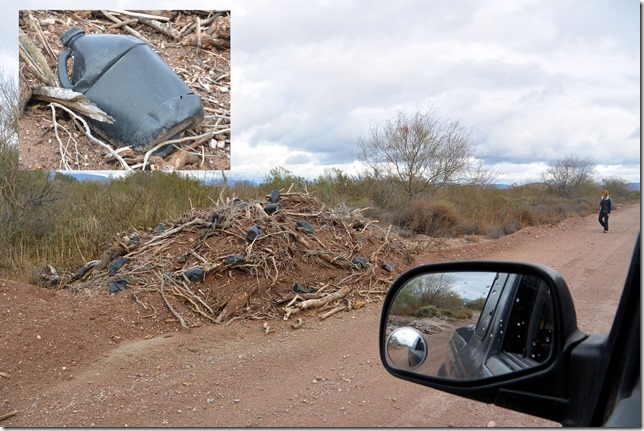
This is visual evidence of an amazing circumstance. Turns out, illegals coming across the border discovered that the Border Patrol could easily spot their pale while water bottles, especially at night. So, enterprising souls that they are, they began painting their water bottles black. Mexican producers saw a market, and, enterprising souls that they are, started manufacturing – – – black water bottles. What a country…..
We spent some time wandering and exploring around the Organ Pipe area, all the way up to Ajo. Later, we moved up northeast of Gila Bend to another area, the Sonora Desert National Monument. While the northern area is still a relatively lush desert, it’s not comparable to the Organ Pipe area. What’s more, many of the roads are closed off, due to either off-road wear-and-tear, or the southern gunnery range. You can actually get into the gunnery range, but it takes a permit that’s only available at the base, where we did not want to spend the time to go.
So, wander we did, and there were many and varied sights to see – here are some snapshots of the ones worth mentioning.
A barrel cactus lets Karin test the firmness of its ripening fruit.
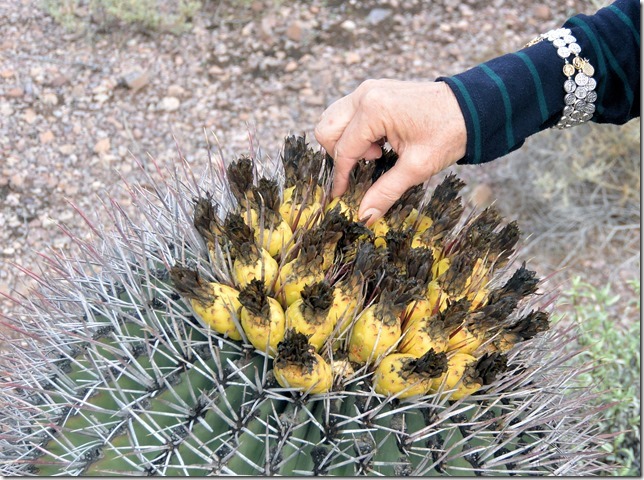
The Ajo Mountains reach up, crowding the stormy sky. Rain clouds push down, trying to please the cacti. The falling water erodes away the eternal rock, one more infinitesimal micron of washed-away dust. Everything merges in a sea of grey and green and mist. It’s a cool, dark, brooding, happy time, depending on who you are.
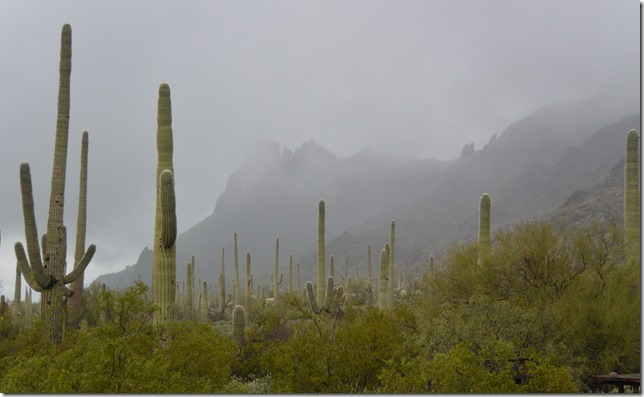
The rain starts to abate, leaving a darkened, damp, grateful desert to gradually soak up its gift.
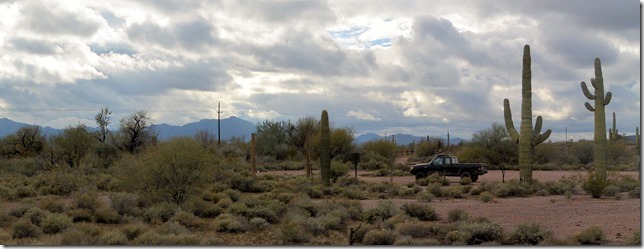
An old stagecoach trail line shack squats amidst the crooked Saguaros, just off the border.
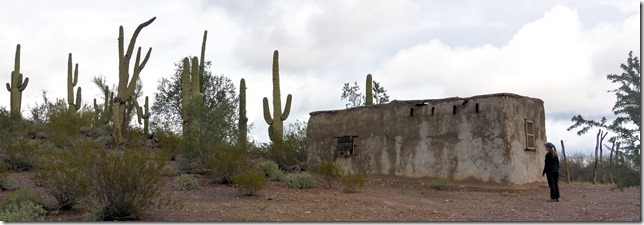
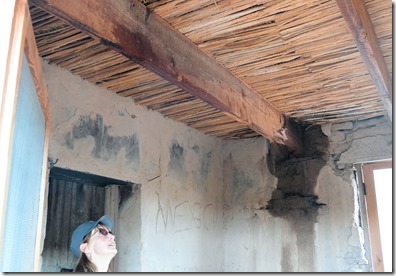
The roof/ceiling of the line shack were made from the skeletal spines of the Saguaros.
The nearby border stretches endlessly, some of it vehicle barrier and some augmented by pedestrian fence. At places, the pedestrian fence simply ends – – I guess that’s where they walk around it.
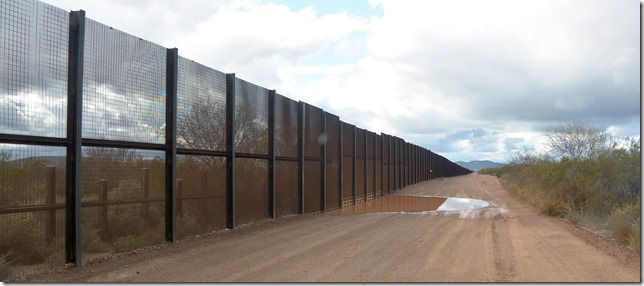
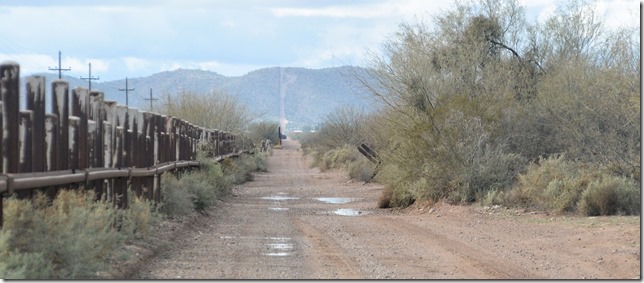
Border Patrol are everywhere. This is some kind of command center on top of a rise. Green-banded white trucks roam calmly and deliberately up and down the steel-flanked border road.
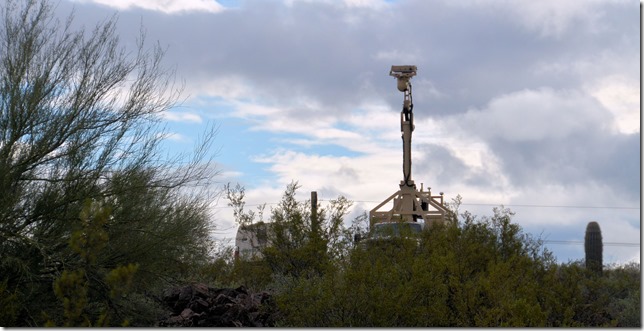
At the town of Ajo, the old copper mine leavings stretch for more than 8 miles. From atop the surrounding bluffs, the mounds of ground-up low-grade ore dwarf the tiny hamlet of 3200. One look at the huge open pit shows where all that dang rock came from.
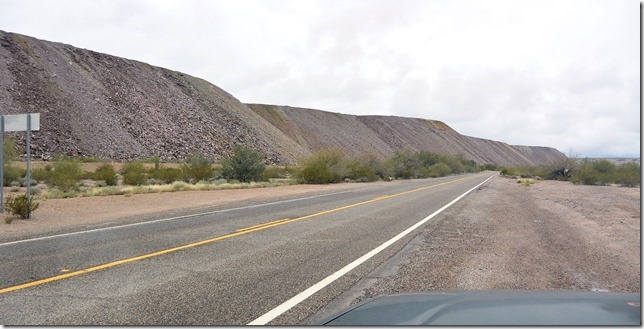
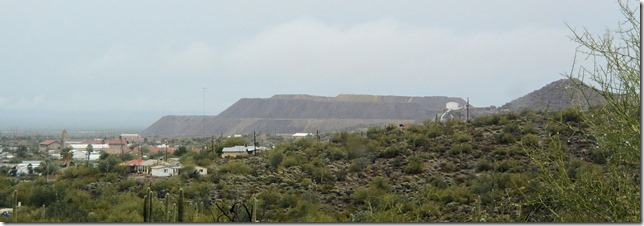
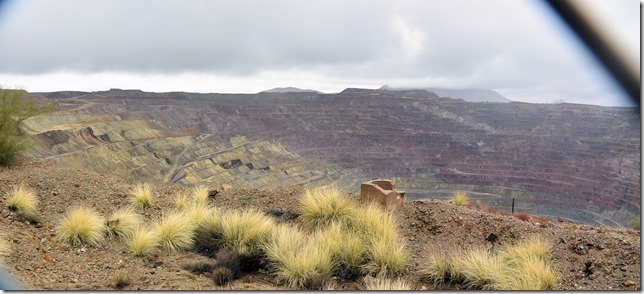
Most of Ajo’s roofs gleam white. It’s the best for reflecting the 110F summer sun’s heat.

Ajo has a pretty cool little museum, run by a local retired school-teacher (and his well-mannered grandson) who knows his history, and loves to chat. The entry hall goes past this mock-up of an early dentist’s office. The chair looks comfy enough, but the tools on the wall give me the creeps.
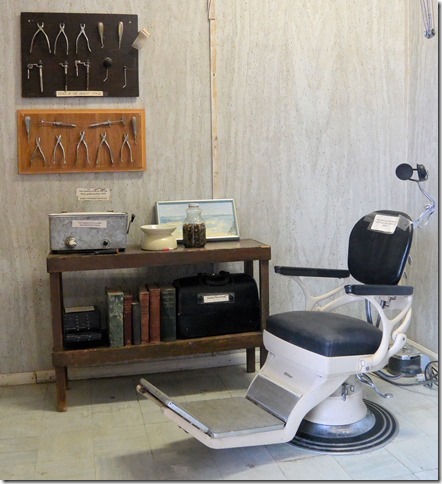
This is an excellent display of the resinous “bags” that form inside a Saguaro when a bird pecks it open. The sack protects the Saguaro from infection and decay, and provides a secure nest for the bird.
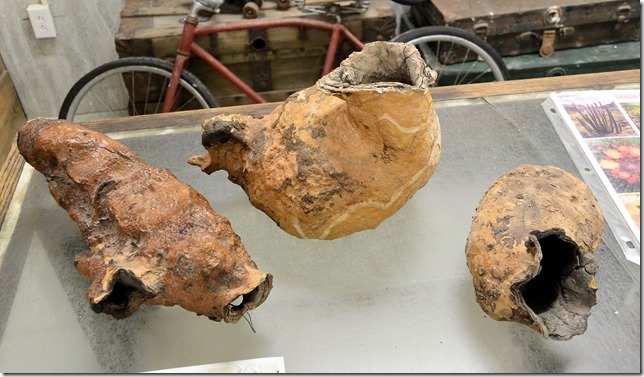
They didn’t use GPS for surveying back in “the day”. Just transits and sticks. I had to use this stuff (well, stuff like it anyway) in an Engineering course at UCLA – – I can tell you, it is laborious.
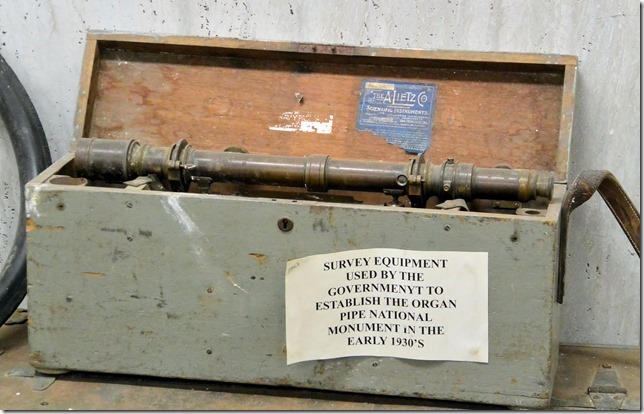
Before digital cameras, Polaroids, film cameras, or even the ancient Brownie, there were – – – glass-plate Graphlex inverted-image bellows cameras, and candle-powered projectors.
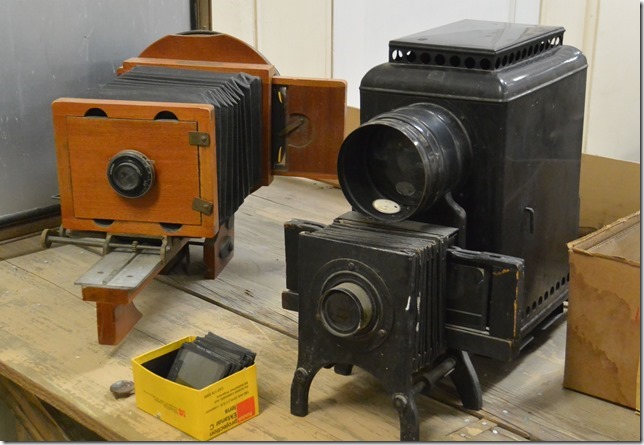
Everybody over 20 or so knows about mechanical typewriters (maybe only from the movies). But how many have seen side-strike or under-strike versions of these? There were a LOT of variations.
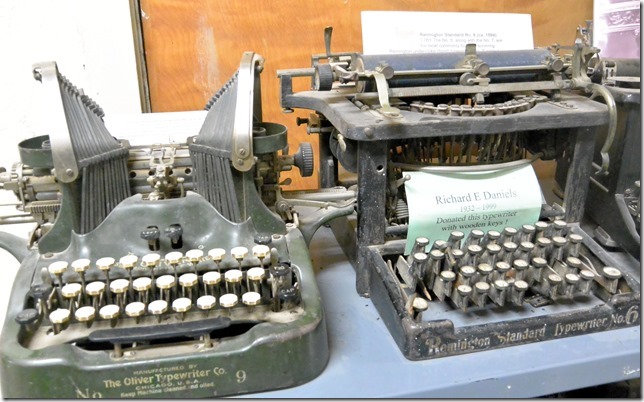
In the northern Sonora, near Gila Bend, all the maps carry the warnings about illegal activities, especially south of I-8 (where we are camped). Off the highway, once again signs prepare the explorer for the occasional encounter with border transgressors. We still have not seen any activity (knock wood).
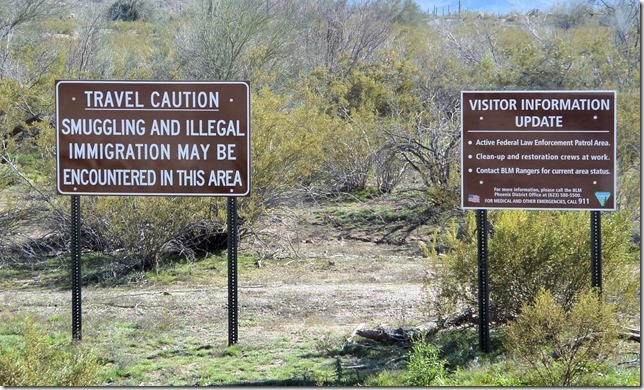
Somewhat unperturbed by the warnings, we camped Howie on a low desert knoll, with a sweeping view of the terrain and just a whisper of noise from nearby I-8. We looked for farther-away sites, but were blocked by road closures and/or roads that were just not Howie-friendly.
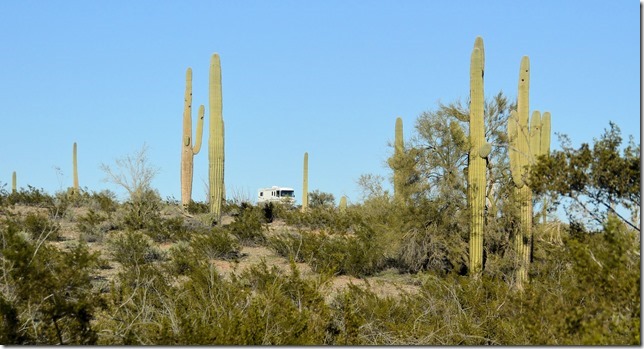
After setting up camp (well, actually just leveling Howie), we explored around a little bit on the few roads that were open.
Proximity to Phoenix is evident – – lots of closed/fenced/placarded areas.
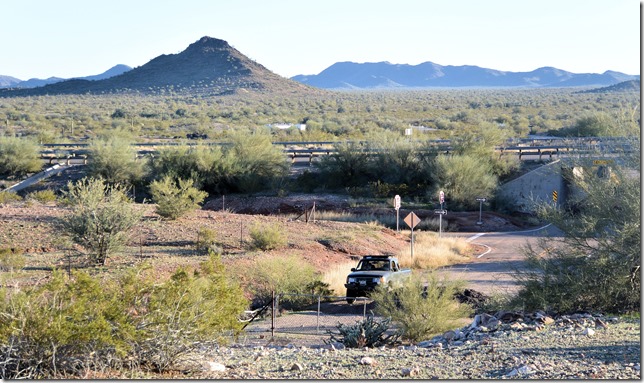
Just off the highway, on an abandoned previous highway, an old homestead crumbles away. What was once junk is now, for a brief time, a charismatic “antique” chimney. In a decade or two, it will be simply rubble.
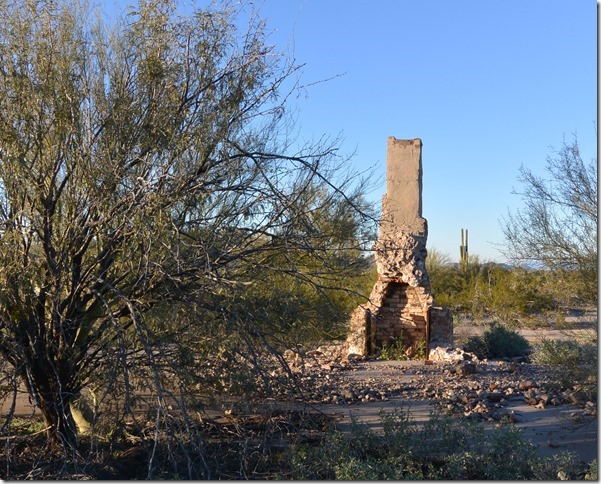
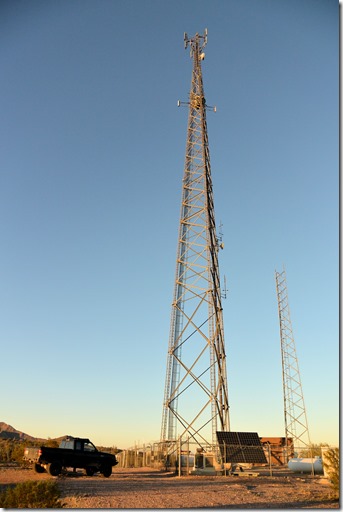
Near camp, a striking cell tower dominates the roadside, generating 4-bar 4G blessings for us. The base area around the tower is interesting, with several diesel and propane generators (most not operating), solar arrays, and the usual dire warning signs.
Razor-wire protects the valuable microwaves.
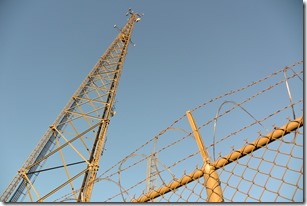
A ways out along the narrowest, grungiest road that we found, we started crossing deep drainages. This was the deepest, nearly a 10-foot 60-degree drop, and the same climb-out on the other side.
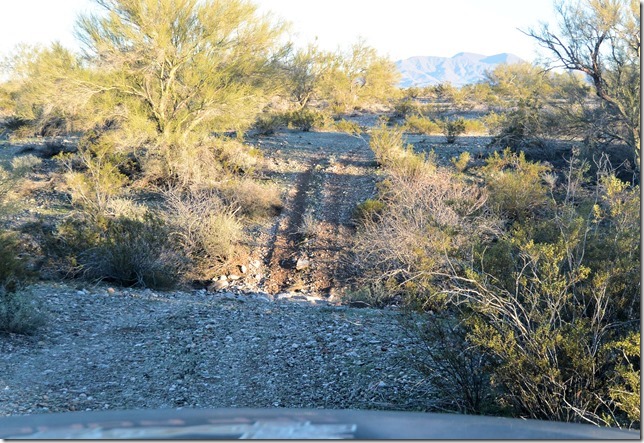
We were just about to put Ralph into 4WD when we reconsidered. It was getting dark, and would be less fun coming back through at a later time, and we thought, Nah – – let’s just get back to Howie and settle down for the evening.
So that’s what we did.
Thanks Greg, very informative. I have wondered what the border fences looked like.